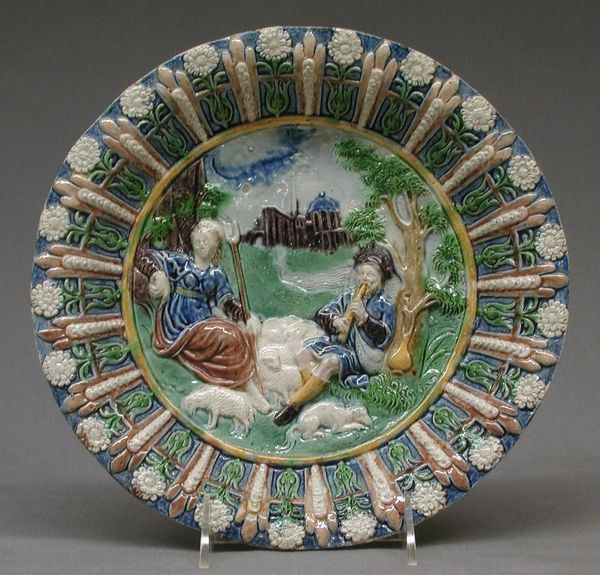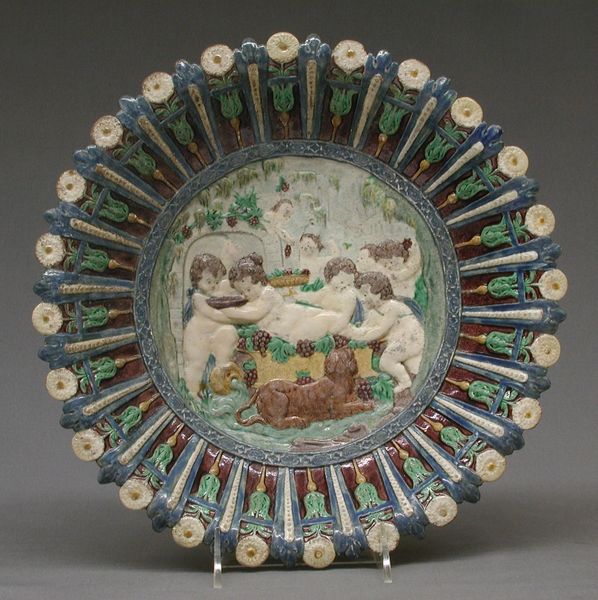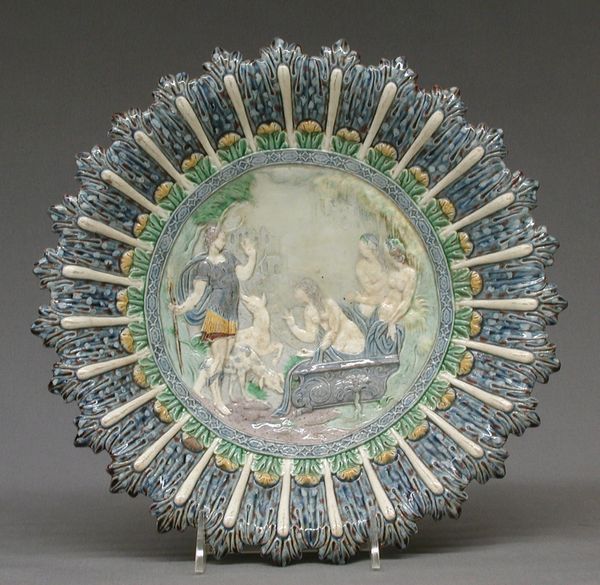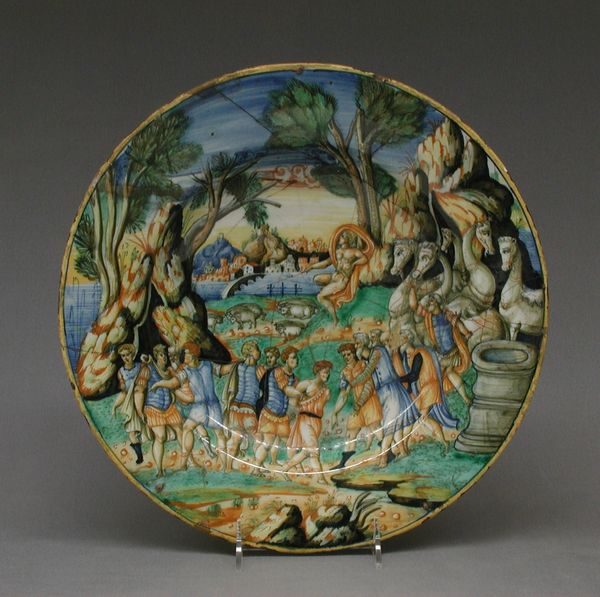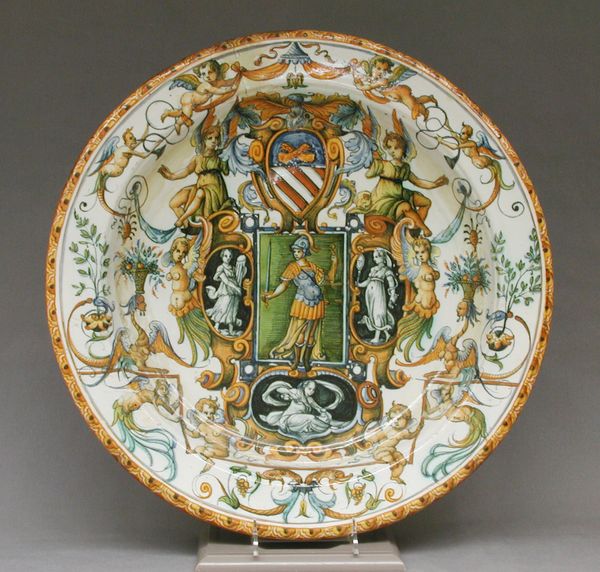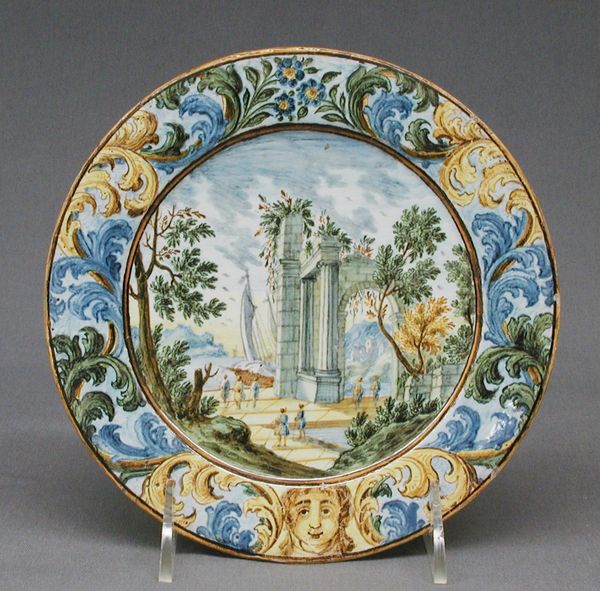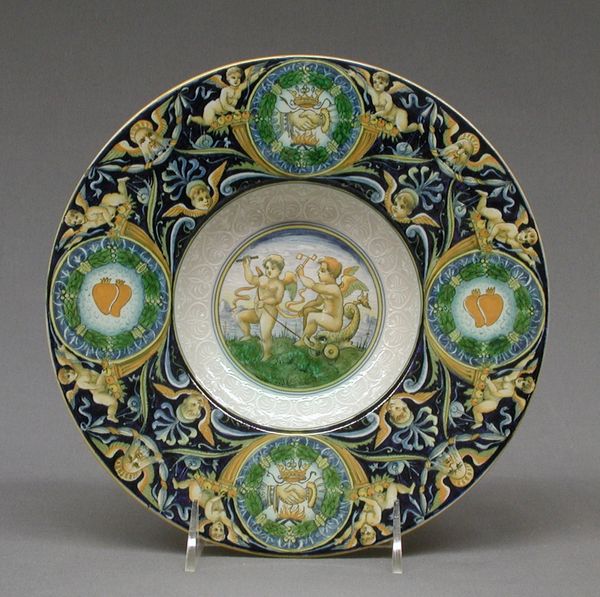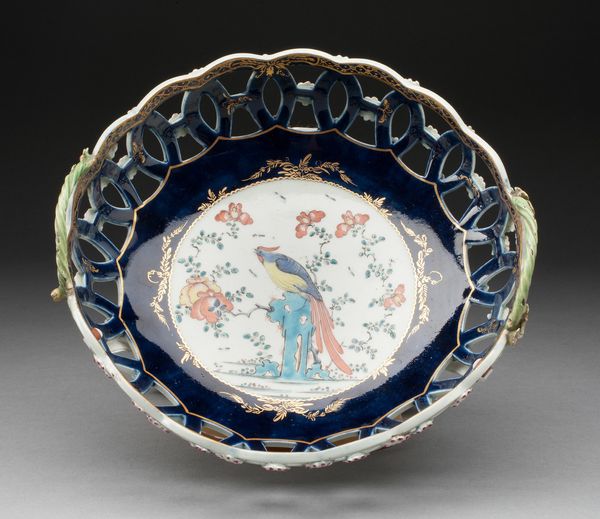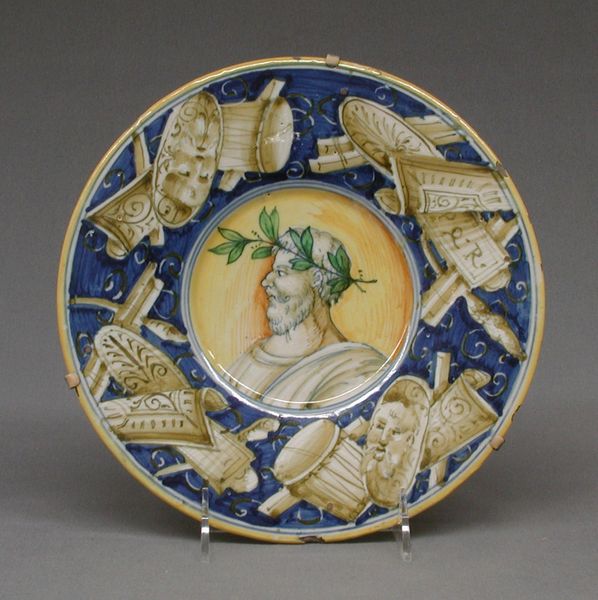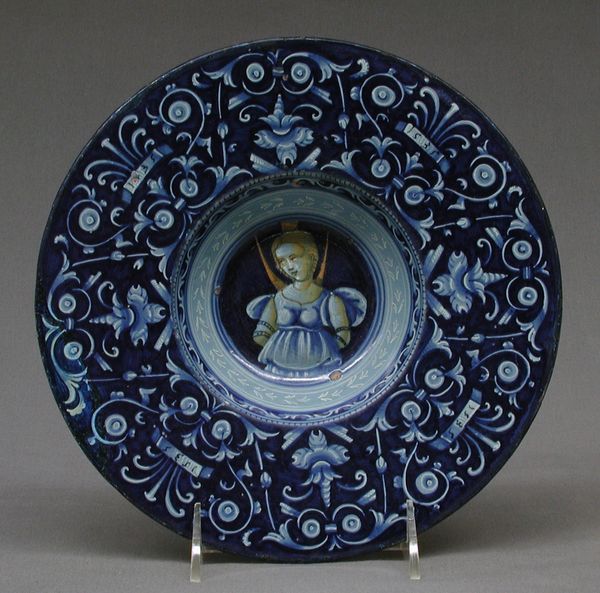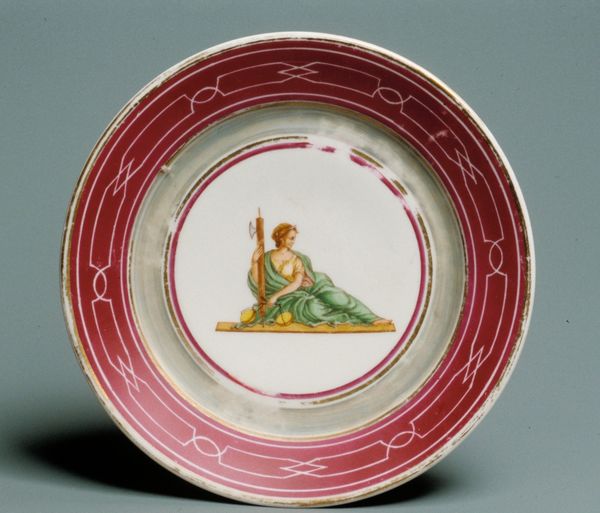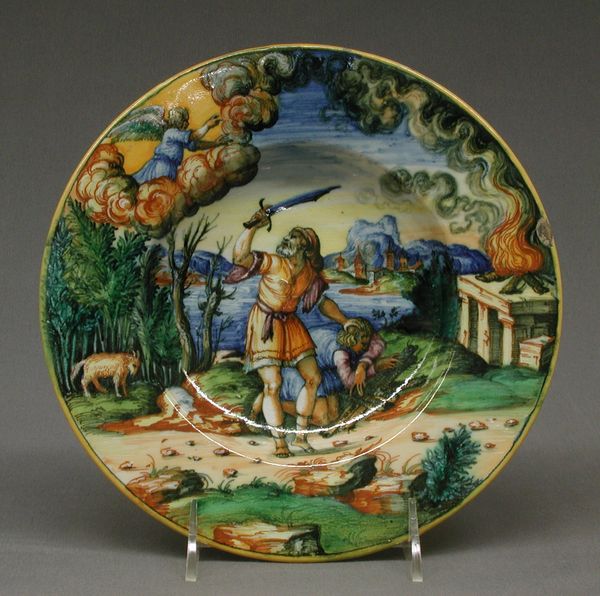
carving, relief, ceramic, earthenware, sculpture
#
decorative element
#
carving
#
relief
#
landscape
#
ceramic
#
figuration
#
11_renaissance
#
earthenware
#
stoneware
#
sculpture
#
ceramic
#
genre-painting
#
decorative-art
Dimensions: Overall (confirmed): 2 3/16 × 9 1/4 × 9 1/4 in. (5.6 × 23.5 × 23.5 cm)
Copyright: Public Domain
Editor: So this "Dish," made of earthenware by Bernard Palissy in the 19th century, is currently housed at the Met. What immediately grabs my attention is the scene in the center—it’s very classical and idyllic. How would you interpret this work? Curator: Beyond its aesthetic appeal, I see this piece as deeply intertwined with questions of power and representation. Palissy's work, while celebrated, was created within a historical context rife with social and political inequalities. Considering the figuration within the dish – can you decode any underlying power dynamics in how men, women, and even nature are portrayed? Editor: I suppose the central female figure has a classical, almost statuesque, quality that might signify something about status? Curator: Exactly. Consider how classical ideals, often rooted in patriarchal structures, were used to legitimize certain social orders. The careful arrangement of figures within a landscape setting… Is that harmony genuine, or does it obscure the exploitation of natural resources, perhaps the labour needed to even create such art? Think about how display is linked to luxury, wealth and social status. Editor: It's interesting to consider the labor that went into its creation, and how that's maybe obscured by the finished product. Curator: These ornate platters would have served a decorative, rather than functional, purpose and could serve as a form of one-upmanship among wealthy collectors. The "Dish" could become less a depiction of classical values and more an argument against the prevailing values that caused social issues. How can decorative arts, seemingly harmless, perpetuate inequality? Editor: Wow, I never would have thought of that! Now, I’m seeing it as much more than just a pretty plate. Curator: Absolutely! Art doesn't exist in a vacuum, does it?
Comments
No comments
Be the first to comment and join the conversation on the ultimate creative platform.
